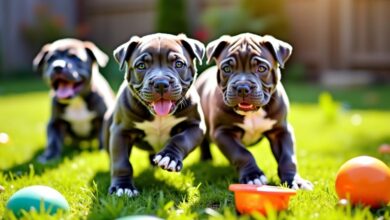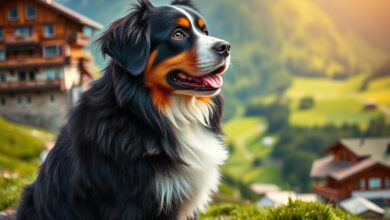Red Bernese Mountain Dog – Rare Color Traits
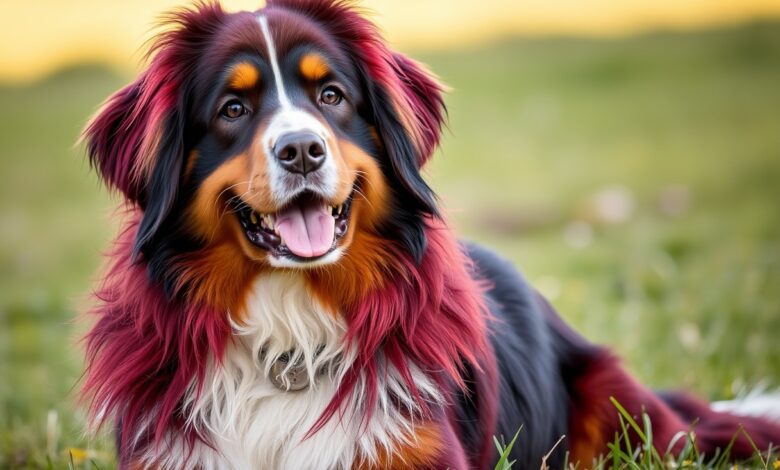
Over the past few years, you may have come across the stunning Red Bernese Mountain Dog, a rare variation of the beloved breed that captivates with its unique color traits. Understanding these distinctive features is necessary for responsible breeding, owning, and caring for your dog. This informative post will guide you through the genetic origins of the red coloration, as well as the potential health implications associated with this rare coat. Discover how these extraordinary dogs can not only enhance your life but also bring joy and companionship to your family.
Key Takeaways:
- Color Variation: The Red Bernese Mountain Dog exhibits a rare color trait, characterized by a deep reddish hue in their coat, distinct from the traditional black, brown, and white coloring.
- Genetic Factors: The unique red coloration is a result of specific genetic variations, making these dogs both rare and desirable among breeders and enthusiasts.
- Health and Temperament: Despite their striking color, Red Bernese Mountain Dogs share the same health traits and friendly temperament as their more commonly recognized counterparts.
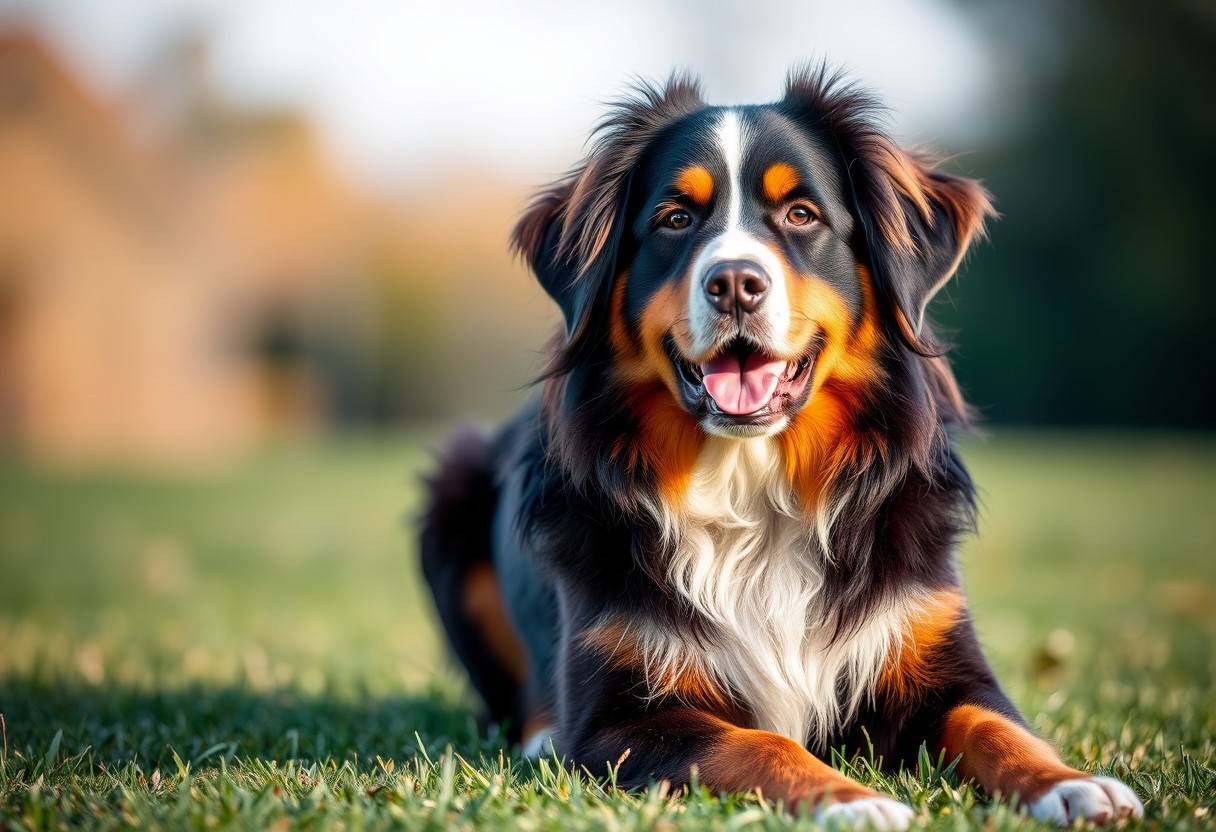
Overview of Bernese Mountain Dogs
Before exploring the unique traits of red Bernese Mountain Dogs, it’s crucial to understand the breed’s overall characteristics. Bernese Mountain Dogs, also known for their gentle and affectionate nature, are large, sturdy dogs that make excellent companions. With a striking tricolor coat and a calm demeanor, they are ideal family pets, known for their loyalty and striking beauty.
History and Origin
History reveals that the Bernese Mountain Dog originated in Switzerland, where they were used as farm workers and draft dogs. Its lineage can be traced back to ancient Roman molosser breeds, which were bred for strength and stamina. These dogs played a crucial role in herding livestock and guarding property, showcasing their versatility and intelligence.
Physical Characteristics
Characteristics of Bernese Mountain Dogs include their impressive size and distinctive coat. Typically, they weigh between 70 and 115 pounds, with males being larger than females. You will notice their thick, tricolored fur (black, white, and rust), distinctively patterned across their bodies. Their strong, square build emphasizes their power and stability, while their friendly, expressive eyes enhance their approachable appearance.
Overview of their physical characteristics shows that Bernese Mountain Dogs are magnificent creatures with muscular builds and elegant coat patterns. Their robust frame allows them to excel in various activities, while their gentle disposition makes them great family dogs. Despite their size, you will find their calming presence very comforting, helping to create a loving environment in your home. As you appreciate their physical traits, also consider the maintenance needs associated with their thick fur, as it requires regular grooming to prevent matting.
Understanding Color Genetics
Some aspects of color genetics can be complex, but understanding them is crucial when considering the unique traits of the Red Bernese Mountain Dog. The genes inherited from the parents determine not just the color, but also patterns and combinations that can emerge in their offspring. By delving into color genetics, you can better appreciate what makes your dog’s coloration truly special and how different genetic factors play a role in this stunning breed.
Basic Color Patterns
With Bernese Mountain Dogs, you will notice a distinct pattern that generally features a combination of black, white, and rust. These basic color patterns are defined by specific gene interactions, which lead to the breed’s signature tri-color effect. While the standard colors are common, understanding the base color genetics can reveal the potential for more unusual and rare hues in this beloved breed.
Rare Color Traits
An increasing interest in the Red Bernese Mountain Dog reveals fascinating rare color traits that set them apart from their traditional counterparts. These traits often arise from unique gene mutations, leading to a more vibrant red or reddish coat. While these colors may be aesthetically pleasing, it’s important to remember that they can sometimes be associated with health risks or breeding challenges.
Another important aspect of rare color traits is their potential impact on your dog’s health and well-being. While a stunning red coat may make your dog stand out, it’s crucial to be mindful of the potential for genetic disorders that can accompany non-standard colors. Responsible breeding practices should always be prioritized to minimize any adverse effects on the temperament and health of your Red Bernese Mountain Dog, ensuring they lead a happy, healthy life.
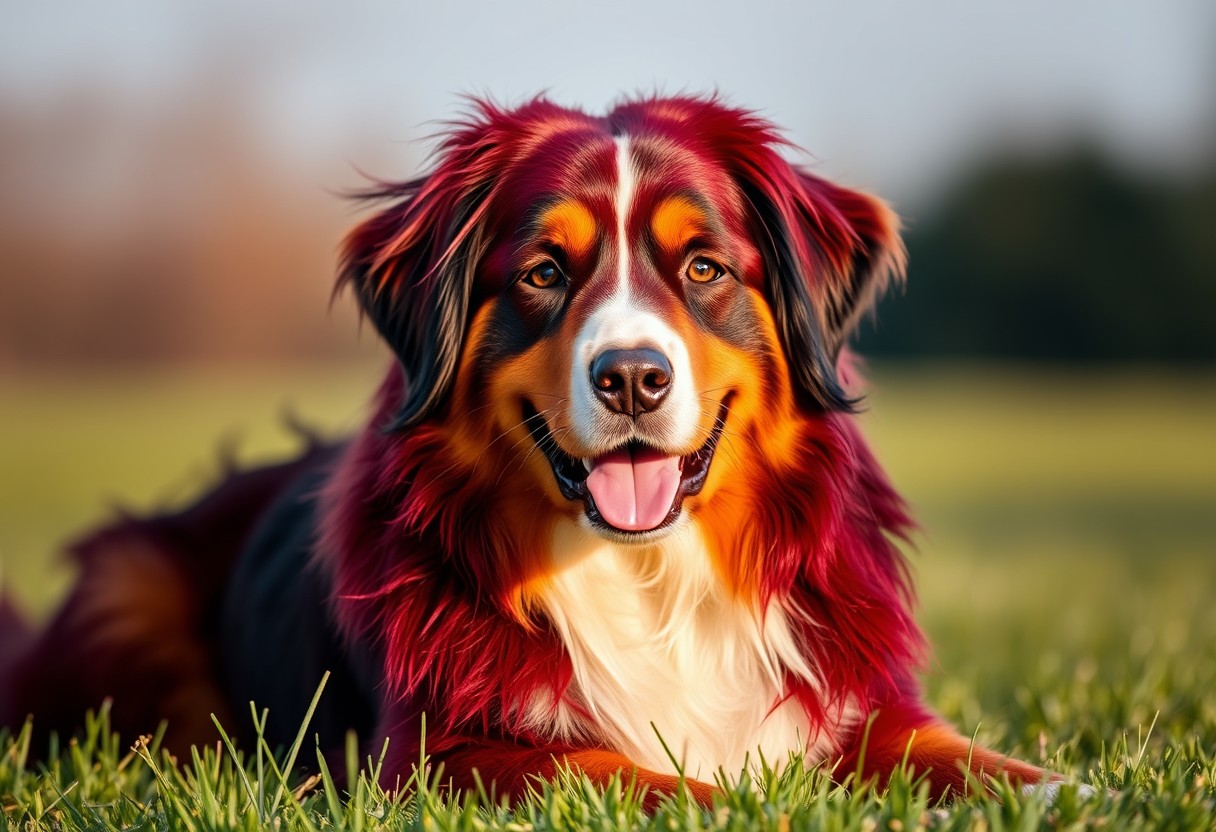
The Red Color Variation
Keep in mind that the Red Bernese Mountain Dog is a unique and rare color variation that tends to catch the attention of dog lovers. This stunning hue, which can range from a deep mahogany to a lighter rust, stands out among the more common tri-color Bernese Mountain Dogs. While their coloration may vary, their friendly nature and loyalty remain constants that endear them to families everywhere.
Unique Characteristics of Red Bernese Mountain Dogs
On top of their striking appearance, Red Bernese Mountain Dogs often exhibit unique personality traits. They may display an extra level of affection and playfulness, making them exceptional companions. Additionally, their alertness and intelligence equip them well for training, ensuring they excel in various roles like family pets, therapy dogs, or service animals.
Comparison with Traditional Coloration
Coloration differences can be significant between Red Bernese Mountain Dogs and traditional tri-color ones.
| Feature | Traditional Coloration |
|---|---|
| Colors | Black, White, & Rust |
| Red Variant | Red & White |
| Popularity | More common |
| Rarity | Less rare |
For instance, you might notice that Red Bernese Mountain Dogs attract attention due to their rarity, while traditional tri-color variants are more prevalent. The red variation, despite being less common, showcases remarkable traits, such as a calmer demeanor and a potential for greater emotional bonding. Additionally, the striking red fur can sometimes give them a more regal appearance compared to the traditional markings. Understanding these differences can help you appreciate the unique qualities of each variation.
Health Considerations
Your Bernese Mountain Dog’s health is paramount, especially when considering the rare red coloration. While the distinctive coat can be a striking feature, it’s vital to be aware of potential health implications. Regular veterinary check-ups, a balanced diet, and adequate exercise contribute to a long, healthy life for your furry companion. Understanding breed-specific health issues will help you proactively manage their well-being, ensuring they thrive as a cherished member of your family.
Common Health Issues
To care for your red Bernese Mountain Dog, it’s important to be aware of common health issues that may arise. This breed is prone to certain conditions, such as hip dysplasia, elbow dysplasia, and certain types of cancer. Regular screenings and maintaining a healthy lifestyle can help mitigate these risks, allowing you to provide your dog with a happy and comfortable life.
Impact of Color on Health
Color can play a role in a dog’s overall health and predisposition to certain health issues. While there are no direct scientific links that suggest that the red coloration of Bernese Mountain Dogs inherently causes health problems, some studies indicate that certain color traits might correlate with higher instances of specific genetic issues. Regular health screenings and a focus on responsible breeding practices can help alleviate these concerns.
Health considerations for your red Bernese Mountain Dog are vital for maintaining longevity and well-being. Although rare coat colors can be visually appealing, they do not possess unique health traits by themselves. Being aware of the potential for genetic predispositions is crucial, as some color-related traits may not have been adequately studied yet. Prioritize responsible breeding and consult with your veterinarian regularly to ensure that your red Bernese Mountain Dog remains healthy and happy, regardless of their stunning appearance.
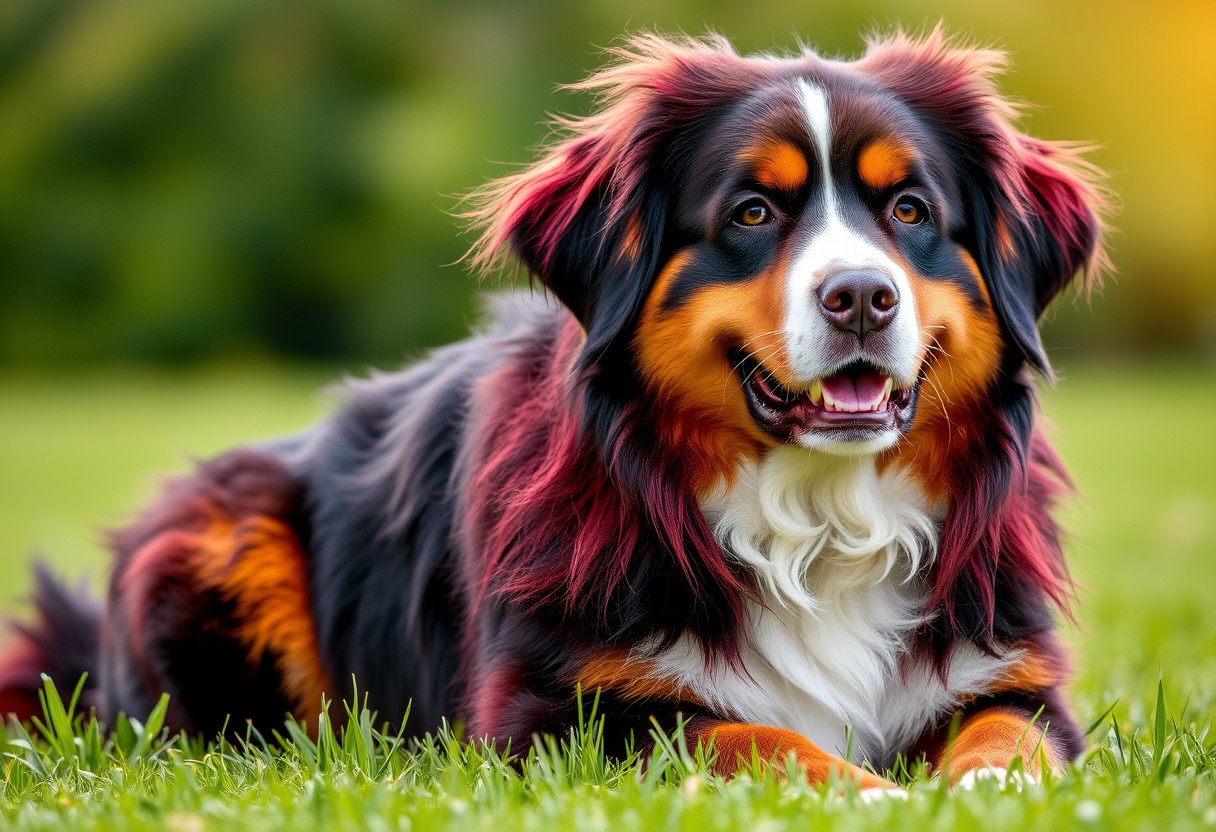
Breeding Practices
For anyone interested in adopting a Red Bernese Mountain Dog, understanding the crucial breeding practices is crucial. This rare color variation requires careful consideration and knowledge from breeders to ensure the overall health and temperament of the dogs. Selecting responsible breeders who prioritize genetic diversity and ethical practices can help you find a well-bred companion that fits your family and lifestyle.
Responsible Breeding of Rare Colors
For successful breeding of rare colors like the Red Bernese Mountain Dog, responsibility and ethics should be at the forefront. This involves selecting breeding pairs that not only exhibit the desired traits but also possess a strong lineage and health clearances. By doing so, you contribute to maintaining the quality and integrity of the breed.
Certification and Standards
To ensure the healthy breeding of Red Bernese Mountain Dogs, you should always check for relevant certifications and standards. Reputable breeders will often follow guidelines established by kennel clubs or breed organizations, ensuring their dogs meet necessary health and temperament criteria.
Breeding standards are crucial for maintaining the health and vitality of the Red Bernese Mountain Dog. Responsible breeders adhere to regulations set by organizations like the American Kennel Club (AKC), which often requires health testing for common genetic issues. This ensures that the breeding stock is not only free from diseases but also aligns with breed standards, preserving desirable traits. You should choose breeders who prioritize transparency in their methods and health certifications, ensuring that your future pet is a healthy and well-adjusted companion.
Care and Training
Many people underestimate the commitment required for the care and training of a Bernese Mountain Dog, especially those with rare color traits. These dogs require regular exercise, proper grooming, and consistent training to thrive. Managing their large size and gentle nature is crucial; implementing a structured routine can help balance their energy levels and ensure they develop into well-mannered companions.
Training Techniques for Bernese Mountain Dogs
Training should start early with your Bernese Mountain Dog to encourage good behavior and socialization. Use positive reinforcement methods, such as treats and praise, to motivate your dog. Keep training sessions short and engaging, as these dogs can become easily distracted. Regular practice of basic commands will be beneficial, as well as incorporating fun games that stimulate their minds.
Special Considerations for Color Variations
Techniques for training dogs with rare color variations may require a bit more attention. These coats might attract added attention or scrutiny, leading to distractions during walks or play. You should ensure that your training environment is as calm and supportive as possible. Additionally, monitoring their health is crucial, as some unique coloring can be associated with genetic predispositions to certain health issues. By staying vigilant, you can effectively address any challenges while enjoying the loyalty and companionship of your Bernese Mountain Dog.
Plus, always remember that your dog’s rare color traits should not overshadow their individual personality and needs. While some variations may be regarded as more beautiful or desirable, all Bernese Mountain Dogs deserve equal care and affection. Focus on fostering their unique character alongside their distinct appearance; this approach will ensure your relationship is both fulfilling and rewarding.
Final Words
To wrap up, understanding the rare color traits of the Red Bernese Mountain Dog not only enhances your appreciation for this breed but also equips you to make informed decisions if you’re considering one as a companion. These unique color variations are fascinating and stem from specific genetic backgrounds. If you’re curious about how these colors come to be, you can explore more by reading about Unraveling the Genetics Behind Their Unique Coat Colors. Your journey in learning about this remarkable breed continues to be enriching!
FAQ
Q: What are the unique color traits of a Red Bernese Mountain Dog?
A: The Red Bernese Mountain Dog is a rare variation of the traditional tri-color Bernese Mountain Dog. Unlike the standard black, white, and rust colors, the Red Bernese features a rich reddish-brown coat. This unique coloring can manifest in different shades, ranging from a deep mahogany to a lighter copper tone. The combination of the rich red base and the characteristic white markings gives these dogs a striking appearance that sets them apart from their more common counterparts. However, it’s important to note that these color traits do not impact the breed’s temperament or health.
Q: Are Red Bernese Mountain Dogs considered a separate breed?
A: No, Red Bernese Mountain Dogs are not classified as a separate breed. They are simply a color variation within the Bernese Mountain Dog breed. The American Kennel Club (AKC) recognizes the standard color pattern of the Bernese, which includes the traditional tri-color pattern. While the red coloring is rare and highly sought after by some dog enthusiasts, all Red Bernese Mountain Dogs still adhere to the breed’s standards in terms of size, temperament, and health. Breeders aiming for this coloration often face challenges in maintaining breed integrity alongside the desired color traits.
Q: How can I find a reputable breeder for a Red Bernese Mountain Dog?
A: When searching for a reputable breeder of Red Bernese Mountain Dogs, it is vital to perform thorough research. Start by looking for breeders who are members of recognized breed clubs, such as the Bernese Mountain Dog Club of America (BMDCA). This affiliation often indicates that the breeder adheres to ethical breeding practices. It is also necessary to ask potential breeders about health testing for common breed-related issues and to see the living conditions of the puppies and their parents. Additionally, connecting with other Bernese Mountain Dog owners in online forums or local meetups can provide valuable recommendations and insights about experienced breeders who focus on the rare red coloration.


